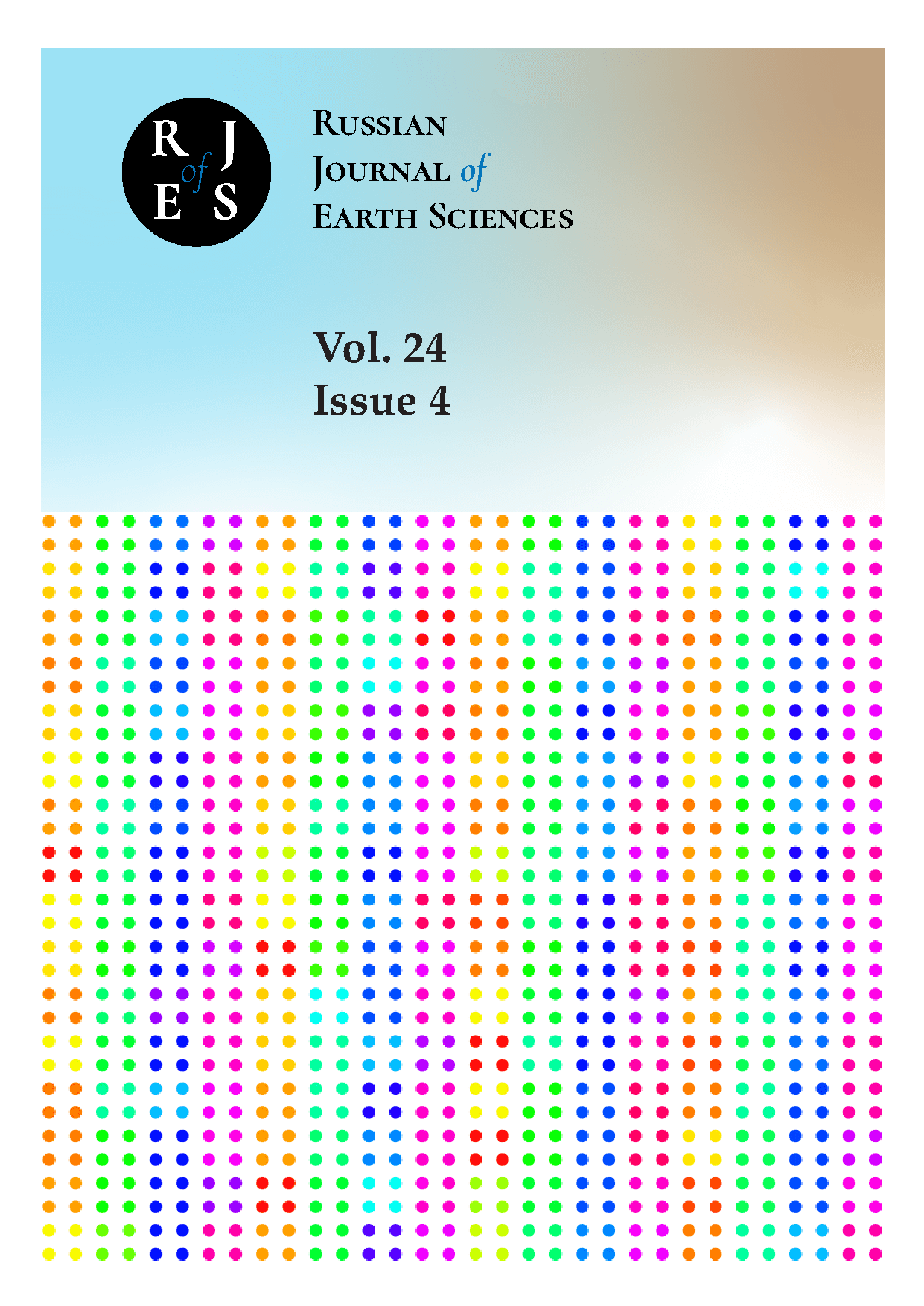с 01.01.1985 по настоящее время
Институт динамики геосфер РАН
Махачкала, Республика Дагестан, Россия
с 01.01.1994 по настоящее время
Дагестанский государственный институт народного хозяйства
Махачкала, Республика Дагестан, Россия
Томский государственный университет (Факультет естественных наук)
Москва, г. Москва и Московская область, Россия
Томский государственный университет (Факультет естественных наук)
Москва, Россия
Дагестанский государственный институт народного хозяйства
Махачкала, Республика Дагестан, Россия
Институт динамики геосфер РАН
Томский государственный университет (Факультет естественных наук)
Владивосток, Россия
УДК 532.685 Движение жидкостей в пористых телах
УДК 532.71 Осмос
УДК 55 Геология. Геологические и геофизические науки
УДК 550.34 Сейсмология
УДК 550.383 Главное магнитное поле Земли
ГРНТИ 37.01 Общие вопросы геофизики
ГРНТИ 37.15 Геомагнетизм и высокие слои атмосферы
ГРНТИ 37.25 Океанология
ГРНТИ 37.31 Физика Земли
ГРНТИ 38.01 Общие вопросы геологии
ГРНТИ 36.00 ГЕОДЕЗИЯ. КАРТОГРАФИЯ
ГРНТИ 37.00 ГЕОФИЗИКА
ГРНТИ 38.00 ГЕОЛОГИЯ
ГРНТИ 39.00 ГЕОГРАФИЯ
ГРНТИ 52.00 ГОРНОЕ ДЕЛО
ОКСО 05.00.00 Науки о Земле
ББК 26 Науки о Земле
ТБК 63 Науки о Земле. Экология
BISAC SCI SCIENCE
Freezing patterns in a porous soil saturated with a saline solution are investigated with regard to osmotic effects, using a model suggested previously by the authors but in a more general formulation. The results include a numerical and an approximate self-similar analytical solution to a nonlinear problem; description of typical freezing behavior in the presence of osmotic pressure. The modeling results agree well with experimental evidence on freezing of saline clay and sand. The model includes three porous domains with ice (I), thermodynamically equilibrated ice+solution (II), and a liquid saline solution (III) in the pores. The modeling is performed for a simplified case of domains II and III that share a mobile phase boundary where the solution freezes up partially, with heat release.
freezing, saline rock, osmosis, mathematical model, modeling, physical model
1. Berry, F. A. F., and B. B. Hanshaw (1960), Geologic evidence suggesting membrane properties of shales, in International Geological Congress: report of the twenty-first session, p. 209.
2. Chuvilin, E. M. (1999), Migration of ions of chemical elements in freezing and frozen soils, Polar Record, 35(192), 59–66, https://doi.org/10.1017/S0032247400026346. EDN: https://elibrary.ru/LFPVMF
3. Chuvilin, E. M., E. D. Ershov, and N. S. Naletova (1998), Mass transfer and structure formation in freezing saline soils, in PERMAFROST - Seventh International Conference (Proceedings), Yellowknife (Canada), Collection Nordicana No 55, Centre d’études nordiques, Université Laval.
4. Chuvilin, E. M., V. Ekimova, B. Bukhanov, et al. (2019), Role of Salt Migration in Destabilization of Intra Permafrost Hydrates in the Arctic Shelf: Experimental Modeling, Geosciences, 9(4), 188, https://doi.org/10.3390/geosciences9040188. EDN: https://elibrary.ru/EEEMKL
5. Dubikov, G. I., and N. V. Ivanova (1990), Saline frozen soils and their distribution in the USSR territory, in Saline Frozen Soils as Foundations, pp. 3–9, Nauka, Moscow (in Russian).
6. Ershov, E. D., I. A. Komarov, and E. M. Chuvilin (1997), Forecast for interaction of liquid technogenous brines buried into permafrost, Geoekologiya, (2), 19–29 (in Russian).
7. Kemper, W. D. (1961), Movement of Water as Effected by Free Energy and Pressure Gradients: II. Experimental Analysis of Porous Systems in Which Free Energy and Pressure Gradients Act in Opposite Directions, Soil Science Society of America Journal, 25(4), 260–265, https://doi.org/10.2136/sssaj1961.03615995002500040010x.
8. Lobkovskii, L. I., and M. M. Ramazanov (2018), Front Regime of Heat and Mass Transfer in a Gas Hydrate Reservoir under the Negative Temperature Conditions, Fluid Dynamics, 53(4), 517–530, https://doi.org/10.1134/S0015462818040092. EDN: https://elibrary.ru/JCLJYS
9. Maksimov, A. M., and G. G. Tsypkin (1987), Overheating and formation of a two-phase zone at phase transitions in permafrost, DAN USSR, 294(5), 1117–1121 (in Russian).
10. Marine, I. W., and S. J. Fritz (1981), Osmotic model to explain anomalous hydraulic heads, Water Resources Research, 17(1), 73–82, https://doi.org/10.1029/WR017I001P00073.
11. Neuzil, C. E. (2000), Osmotic generation of ’anomalous’ fluid pressures in geological environments, Nature, 403(6766), 182–184, https://doi.org/10.1038/35003174.
12. Ramazanov, M. M., A. V. Karakin, and L. I. Lobkovskiy (2019), Mathematical Model for the Motion of Solutions Taking into Account the Osmotic Effect, Doklady Earth Sciences, 489(1), 1306–1309, https://doi.org/10.1134/S1028334X19110060. EDN: https://elibrary.ru/DUBNXB
13. Ramazanov, M. M., N. S. Bulgakova, and L. I. Lobkovskiy (2022), Osmotic Convection, Doklady Physics, 67(5), 153–158, https://doi.org/10.1134/S1028335822040061. EDN: https://elibrary.ru/VNKSJP
14. Ramazanov, M. M., N. Bulgakova, and L. Lobkovsky (2023), Mathematical Model of Freezing of Rocks Saturated With Salt Solution Taking Into Account the Influence of Osmosis, Russian Journal of Earth Sciences, 23(5), 1–15, https://doi.org/10.2205/2023ES000857. EDN: https://elibrary.ru/BYCURY
15. Shakhova, N., I. Semiletov, O. Gustafsson, et al. (2017), Current rates and mechanisms of subsea permafrost degradation in the East Siberian Arctic Shelf, Nature Communications, 8(1), https://doi.org/10.1038/ncomms15872. EDN: https://elibrary.ru/XNDEBA
16. Streletskaya, I. D., and M. O. Leibman (2002), Cryogeochemical interrelation of massive ground ice, cryopegs, and enclosing deposits of central Yamal, Kriosfera Zemli, VI(3), 15–24 (in Russian), EDN: https://elibrary.ru/PWYRFB.
17. Tsypkin, G. G. (2009), Flows with Phase Transitions in Porous Media, 232 pp., Fizmatlit (in Russian).
18. Vasiliev, V. I., A. M. Maksimov, E. E. Petrov, and G. G. Tsypkin (1996), Heat and Mass Transfer in Freezing and Thawing Soils, 224 pp., Fizmatlit, Nauka, Moscow (in Russian).
19. Yakushev, V. S. (2009), Natural Gas and Gas Hydrate in Permafrost, 190 pp., VNIIGAZ, Moscow (in Russian), EDN: https://elibrary.ru/OTRYFK.















